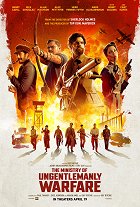Drama - Genres
Hottest on Streaming Today
Origin and characteristics of the drama
Drama is one of the three basic types of literary work, along with lyric and epic. It evolved in ancient Greece from the celebrations in honour of the god Dionysus, which included traditional performances consisting mainly of dancing, choral singing and representations of various scenes from life. The continuous refinement of these performances led to the emergence of an institutionalised theatre based on dramatic texts by various authors such as Sophocles and Euripides. Maintaining the unity of place, time and space was essential for these ancient plays, and actors commonly used masks, costumes and props. The first dramatic genre was tragedy, inspired by ancient history and mythology, with stories that were serious and fateful and that often ended tragically. Not long after, comedy saw the light as a second dramatic form that was, in contrast, funny and exuberant and offered the audience happy endings. The theatrical tradition was subsequently developed both in the period of ancient Rome and in the Middle Ages. The first indoor theatres were built During the Renaissance and William Shakespeare became the most important playwright with works that profoundly influenced the form of tragedies and comedies.
In the 19th century, the structure of drama was defined by five pillars: "exposition" (used to introduce the characters and the plot), followed by "clash" (throwing an element of conflict into the plot), "crisis" (where the drama reaches its climax), and "peripeteia" (a proposal for a solution to the initial situation), all culminating in "catastrophe" (the denouement and final catharsis). Drama became a genre in its own right when the term began to be used to describe plays that were neither comedy nor tragedy, and it later came to be used in a similar form to classify cinematic works. In cinema, drama is thus a fictional genre that can be used to describe any film whose story is told in a predominantly serious tone. In this respect, drama is set in opposition to comedy, where the story is told in a predominantly humorous tone. Dramas are about realistic characters experiencing situations in which they find themselves in conflict either with themselves, with other characters or with the environmental influences that accompany the situation. Apart from theatre, literature and film, drama is also a genre commonly associated with television series and radio plays.
Different forms of drama
Given that drama originated in theatre, where it was generally referred to as any scenic telling of a story through dialogue, monologues and acting, in a broader sense, film drama can be considered any film where actors portray a serious fictional story, and as a result, it can be seen as the broadest genre, encompassing all sub-genres based on the combination of drama with other types of genres. According to the type of their plot, we can distinguish, among others, war dramas, historical dramas, biographical dramas, catastrophic dramas, crime dramas and romantic dramas, which are part of genres with their dedicated articles in this section. But, depending on the nature of the film, we can also talk about psychological, social, political or even coming-of-age dramas, and this also helps to identify, for example, sports, court, legal or family dramas. Some dramas are created to move the audience, others to make them feel tense, but their common goal is above all to evoke a sense of sympathy with the characters and their actions.
Many dramas deal with fundamental social ills and phenomena, such as inequality and injustice, racial, religious or gender prejudice, poverty, alcoholism, drug addiction, mental health, violence against certain groups, corruption, political unrest, the wickedness of the powerful, and so on. Psychological dramas focus on portraying the psychology of the characters, while social dramas deal with the living conditions in the lower classes. In coming-of-age dramas, teenage protagonists find themselves on the threshold of adulthood, begin to lose their childhood illusions and discover their first serious loves and, eventually, their sexuality; sports dramas, on the other hand, often work with the figure of an athlete or an entire team that gradually works its way up from the bottom of the ladder to become champions. In family dramas, the protagonists are members of one family; in courtroom dramas, they the lawyers and their clients. Melodramas emphasize heightened emotions and sentimentality, and their protagonists are often self-sacrificing, virtuous women going through some kind of hardship or crisis, illness, loss or unrequited love, or victims of adultery, love affairs and conspiracies going on behind their backs. Some dramas may also have fantasy or sci-fi elements, just as comedy dramas enrich a serious plot with humorous elements.
Orphans of the Storm (1921)
Photo © United Artists
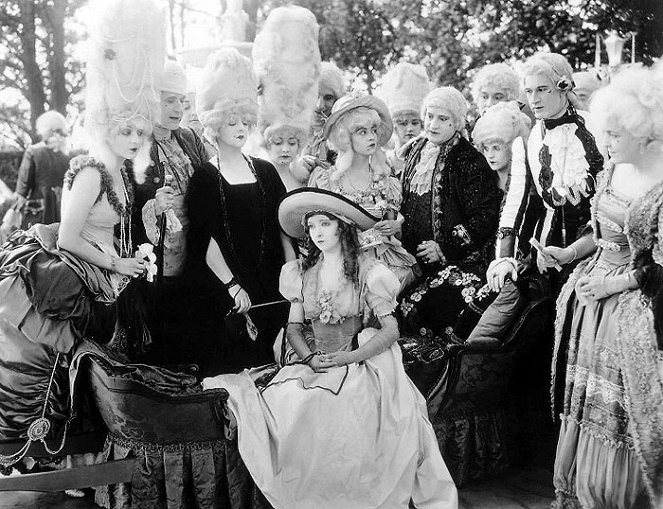
Drama in the early days of cinema
Film genres began to take shape many years after the birth of the film medium. Initially, films were limited in length, their authors experimented with the form and different subjects, and their work demonstrated the differences between documentary and fiction. For example, the British five-minute film Fire! (1901) can be considered an early drama, it showed members of a fire brigade extinguishing a fire in a block of flats and rescuing its occupants, while its American variation, Life of an American Fireman from 1903, combined fiction sequences with documentary footage. The first French director to work with complete stories was Georges Méliès, who pioneered special effects and the science fiction and fantasy genres, and the first American film with a complete story was the western The Great Train Robbery (1903). The development of drama was subsequently aided by the establishment of American film production companies that employed specific filmmakers. D.W. Griffith was the greatest influence on the shape of film as an art form, he directed over 400 (short) films between 1908 and 1913, many of which were dramatic in nature and some even functioned as socially critical works; for example, A Corner in Wheat (1909) highlighted the inequality between hard-working peasants and greedy merchants, while Brutality (1912) thematised domestic violence.
Before World War I, several film producers moved to the Los Angeles area, leading to the establishment of the American centre of film production that from 1913 would be known as Hollywood. Shortly thereafter, a system of studios was established, focusing on the production of films in large sets. Westerns and comedy slapstick were the dominant genres at the time, and the first film stars began to emerge. The drama Traffic in Souls (1913) dealt with the subject of forced prostitution and was one of the first films to attract audiences to this controversial subject. Frank Powell's drama A Fool There Was (1915), where the life of a married man collapses under the influence of his mistress, introduced the motif of the femme fatale, and infidelity was also the subject in Blind Husbands (1919), where the wife of an oblivious mountaineer became the object of interest of a cynical seducer. Oscar Micheaux's drama Within Our Gates (1920), now the earliest surviving film made by an African American director, was notable for its predominantly black cast and the criticism of the treatment of ethnic minorities.
D.W. Griffith directed the biblical drama Judith of Bethulia (1914), the controversial historical drama The Birth of a Nation (1915), and the dramatic epic Intolerance (1916), and later turned to romantic dramas such as Broken Blossoms (1919), True Heart Susie (1919), A Romance of Happy Valley (1919) and Way Down East (1920). He also made war dramas like Hearts of the World (1918), Orphans of the Storm (1921), and America (1924). A number of dramas were also produced in Europe, such as the French historical drama Queen Elisabeth (1912), the German Madame DuBarry (1919), the Danish film The President (1919), the Swedish films Ingeborg Holm (1913) and Sir Arne's Treasure (1919), and the Swedish-Icelandic drama The Outlaw and His Wife (1918).
The Birth of a Nation (1915)
Photo © Epoch Producing Corporation
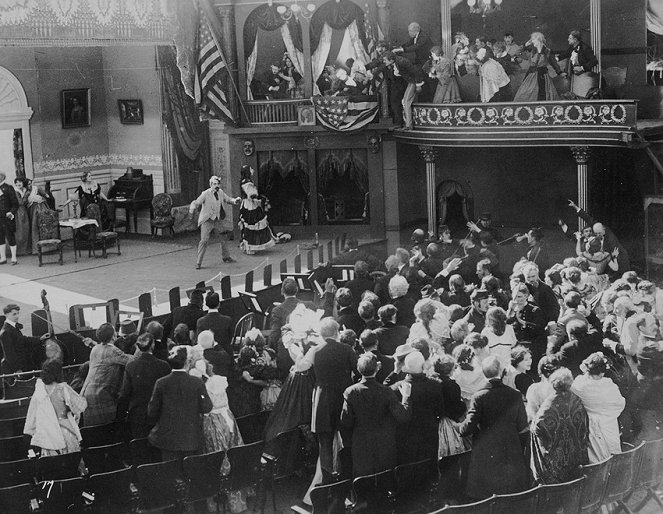
Drama in 1920s and pre-code Hollywood
The film industry continued to grow steadily in the 1920s (by the end of the decade there were around twenty studios operating in the USA alone), together with the number of films being produced. Most of these films were silent, accompanied only by music from a live orchestra. The first experiments with recorded sound were made with Don Juan (1926), which had an autonomous soundtrack recorded on a special medium, but the breakthrough came with the musical drama The Jazz Singer (1927), the first film to incorporate an audio track, and its success led to the proliferation of sound films, which have dominated cinema since 1929. The switch to sound significantly affected not only the careers of some actors and actresses, but also some films, for example, the drama Queen Kelly (1929) remained unfinished and with a hastily rewritten ending was distributed in Europe but not in the USA. Before and after, however, films of various genres were made, most often comedies, westerns, adventure and romantic, historical and war films, but also horror, crime and, after the invention of the sound, musicals.
Among the most significant films of this period are the biblical dramas of director Cecil B. Demille's The Ten Commandments (1923) and The King of Kings (1927), the war dramas The Four Horseman of the Apocalypse by Rex Ingram (1921) and The Big Parade by King Vidor (1925), and the romantic dramas Camille (1921) and Torrent (1926). Originally from Sweden, Victor Sjöström found success in Hollywood with He Who Gets Slapped (1924), which told the story of an intellectual's descent into a career in the circus, The Scarlet Letter (1926), about the life of an adulteress in a Puritan society, and The Wind (1928), whose protagonist went mad in the face of the harsh environment she was forced to move to. The German-born director F.W. Murnau, who succeeded domestically with, among others, The Burning Soil (1922), Phantom (1922), and The Last Laugh (1924), similarly broke through in the United States with Sunrise (1927), a romantic drama that won three Academy Awards, where a married rural farmer temporarily falls for an unknown beauty from the city, but this only serves to confirm his love for his wife. Murnau would go on to make the dramas 4 Devils (1928), City Girl (1930) and Taboo: A Story of the South Seas (1931), also in the USA.
In 1929, the Academy of Motion Picture Arts and Sciences held its first Oscar ceremony, with the first-ever winner being the wartime romantic drama Wings (1927), which had wowed audiences with its aerial combat scenes. Also worth mentioning are the dramas Tol'able David (1921), The Way of All Flesh (1927) and the films directed by Erich von Stroheim Foolish Wifes (1922), Greed (1924) and The Wedding March (1928). Among the European productions, the most significant include the Danish filmmaker Carl Theodor Dreyer's dramatic films Love One Another (1922), Michael (1924) and The Passion of Joan of Arc (1928), the French biographical drama Napoleon (1927), the Soviet films Battleship Potemkin (1925) and Strike (1925), the British dramas by Alfred Hitchcock Easy Virtue (1927) and The Manxman (1929), and the German films by Georg Wilhelm Pabst The Treasure (1923), The Street of Sorrow (1925), Pandora's Box (1929), Diary of a Lost Girl (1929), and White Hell of Pitz Palu (1929).
The 1920s were also the beginning of the Jazz Age and a period of social exuberance, relaxed atmosphere and prohibition. In response to the rampant attitude of American filmmakers towards the presentation of immoral themes in films, in 1922 the Motion Picture Producers and Distributors of America (MPPDA), a self-censoring organization headed by Will H. Hays, established the Production Code, a set of moral rules and guidelines for Hollywood films. The Code was created in 1930, but it was not strictly enforced until 1934, when the informal name "Hays Code" was adopted in reference to the head of the association. Its rules remained in force until 1966, when it was abolished and then replaced in 1968 by the MPAA film rating still in use today. The period of American cinema between the widespread adoption of sound in 1929 and the adoption of the Production Code in 1934 is referred to as pre-Code Hollywood. Some of the dramas produced in this period include The Godless Girl (1929), The Single Standard (1929), The Divorcee (1930), The Champ (1931), Possessed (1931), American Madness (1932), A Bill of Divorcement (1932), Grand Hotel (1932), Cavalcade (1933), Morning Glory (1933) and Little Women (1933).
Sunrise (1927)
Photo © 20th Century Fox
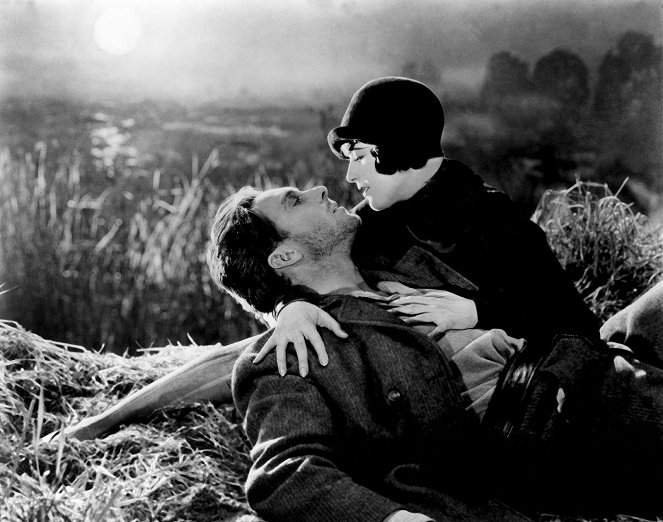
The rise of American melodrama after the advent of sound film
In opposition to the plethora of war and adventure films and westerns, Hollywood also began to produce dramas that contained elements designed to appeal to female audiences as well as male audiences, focusing particularly on strong female characters and love plots, partner relationships and themes of marriage, infidelity and relationship crises. The directors that were instrumental in making these films in the late 1920s and early 30s include Frank Borzage, whose three Oscar-winning romantic-war film Seventh Heaven (1927) and than also Street Angel (1928) were sentimental romances from the end of the silent era, and John M. Stahl, whose melodramas Back Street (1932), Imitation of Life (1934) and Magnificent Obsession (1935) were already sound films. John M. Stahl would later succeed with When Tomorrow Comes (1939), about a waitress's romance with a married pianist, and Leave Her to Heaven (1945), whose amorous protagonist destroyed everyone around her with her jealousy; other films of his, Immortal Sergeant (1943), The Keys of the Kingdom (1944) and Forever Amber (1947), also contained melodramatic elements. Director George Cukor cast only women in his melodramatic comedy The Women (1939), even though its plot revolved mainly around relationships with men. Dorothy Arzner, the only female director from 1930s Hollywood, also worked with melodramatic stories in Merrily We Go to Hell (1932) and Christopher Strong (1933).
Some melodramas of the 1930s benefited from the presence of famous actresses in leading roles, with many of them becoming stars. One of the greatest was Barbara Stanwyck, who shone first in Frank Capra's Ladies of Leisure (1930) and then took the lead roles in the melodramas Forbidden (1932), The Bitter Tea of General Yen (1933), Baby Face (1933), Gambling Lady (1934), and King Vidor's Stella Dallas (1937). No less famous was Joan Crawford, who took the lead roles in Sadie McKee (1934), Mannequin (1937), The Shining Hour (1938), and Strange Cargo (1940), all directed by Frank Borzage. Bette Davis starred in William Wyler's Jezebel (1938), which won two Academy Awards, then portrayed a terminally ill racer in Edmund Goulding's drama Dark Victory (1939), and William Wyler would later cast her in The Little Foxes (1941), which was nominated for nine Academy Awards, and in Now, Voyager (1942), Irving Rapper gave her the role of a woman who rebels against her domineering mother.
Another star was German-born actress Marlene Dietrich, who made her breakthrough in Hollywood playing a cabaret singer in Josef von Sternberg's The Blue Angel (1930) and Morocco (1930). The same director later cast her as a courtesan in Shanghai Express (1932) and as a dancer in The Devil Is a Woman (1935). Marlene also impressed as a jewel thief in Frank Borzage's Desire (1936) and as a philandering wife in Ernst Lubitsch's drama Angel (1937). The Swedish actress Greta Garbo, who was already famous for her roles in the silent melodramas Flesh and the Devil (1926), A Woman of Affairs (1928) and The Kiss (1929), met with similar success. She later played a spy in The Mysterious Lady (1928) and Mata Hari (1931), an opera singer in Romance (1930), a former prostitute in Anna Christie (1930), an unfaithful wife in Anna Karenina (1935), and a courtesan in George Cukor's Camille (1936). Other actresses who regularly appeared in melodramatic films include Jean Harlow (Hold Your Man, 1933), Margaret Sullavan (Next Time We Love, 1936) and Janet Gaynor (the seven Oscar-nominated studio melodrama A Star Is Born, 1937).
The Blue Angel (1930)
Photo © Universum Film (UFA)

Other dramas from Hollywood’s Golden Age in the 1930s
The period of the 1930s and most of the 40s is often referred to as the Golden Age of Hollywood. It introduced a new generation to the screen and saw the development of new popular genres such as musicals and gangster films. Sound film production was already in full swing and colour films were beginning to appear – the first feature film shot in colour, using the three-strip Technicolor method, was the historical drama Becky Sharp (1935). The same technique was adopted for other films, notably the spectacular The Wizard of Oz (1939) and Gone with the Wind (1939), with the latter becoming the most expensive film of the decade and the longest sound film of its time, winning a record eight categories at the Oscars and achieving unprecedented record-breaking success at the box office. In contrast, there were also many inexpensive films (known as category B, or B-movies) that were an economic consequence of the Great Depression.
Dramas that also did well at the Oscars in the 1930s include: John Ford's The Informer (1935) winning four of them, William Dieterle's biographical drama The Life of Emile Zola (1937) earning three of the ten nominations, Sidney Franklin's The Good Earth (1937) and Norman Taurog's Boys Town (1938) taking two of its five nominations. After These Three (1936), William Wyler was more successful with his romantic dramas Dodsworth (1936) and Wuthering Heights (1939), which received one statuette each. George Cukor made the three Oscar-nominated drama David Copperfield (1935) and the four Oscar-nominated romantic drama Romeo and Juliet (1936), while director Frank Capra competed for awards with his films Mr. Deeds Goes to Town (1936) and Mr. Smith Goes to Washington (1939). The dramatic films A Tale of Two Cities (1935), Stage Door (1937), The Citadel (1938), Of Mice and Men (1939) and Goodbye, Mr. Chips (1939) were also nominated for a number of Academy Awards.
Mr. Smith Goes to Washington (1939)
Photo © Columbia Pictures Corporation
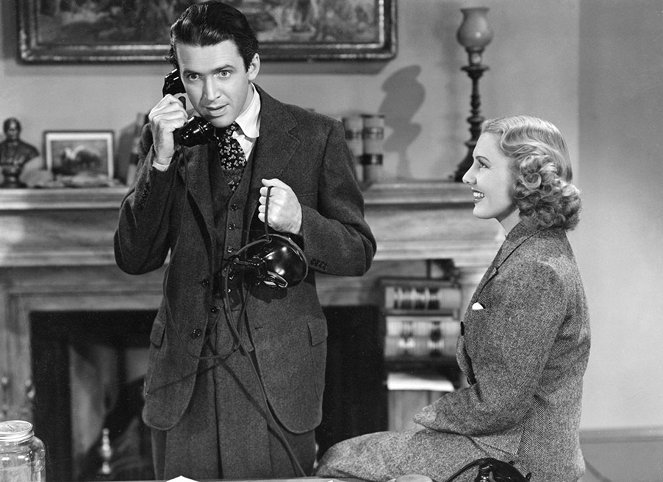
Wartime, post-war drama and the end of Hollywood's Golden Age
In the USA, the outbreak of World War II put an end to the economic problems of the previous decade, and film not only provided a distraction in difficult times, but also became a source of information, moral encouragement and, for the military, a propaganda tool. A large number of war films were made, but other genres were also prolific, and while the American film industry flourished, European production suffered as a result of the conflict. The wartime involvement was also reflected in a number of non-war films, such as the hugely popular three-Oscar-winning romantic drama Casablanca (1942), directed by Michael Curtiz and set on the neutral ground of a Moroccan nightclub during the war, and William Wyler's patriotic drama Mrs. Miniver (1942), which took home six of its twelve Oscar nominations. American films were not exported to Europe during the war, but this trend returned after the conflict ended. In the second half of the 1940s, creative enthusiasm waned in the wake of the film industry's trumped-up Communist manhunts, and Hollywood's Golden Age came to a definitive end in 1948, when the U.S. Supreme Court ruled illegal the monopolizing distribution practices of the studios, which oversaw the operation of cinema chains and sold films to them in bulk packages. This change eventually allowed smaller studios and independent producers to enter the industry, and people could now work for several studios at the same time.
Citizen Kane (1941), a drama about a fictional millionaire and media mogul directed by Orson Welles, enriched cinema with a number of innovative filmmaking and storytelling techniques, and although it turned in only one of its nine Oscar nominations and was not much appreciated by audiences at the time, it has now become a much-praised legend, often featuring in lists of the best American films of all time. Orson Welles went on to direct the four Oscar-nominated drama The Magnificent Ambersons (1942), which told the story of a high-profile family who lost all their wealth and social status, and later directed the Shakespearean adaptation Macbeth (1948). Two Oscars were awarded for John Ford's The Grapes of Wrath (1940), in which a disaster-stricken family of farmers is forced to seek their fortune in the West, and in addition to this, Pride and Prejudice (1940), Jane Eyre (1943), and Little Women (1949) also contributed to the body of notable adaptations of fictional dramas. John Ford went on to direct How Green Was My Valley (1941), a family saga of Welsh miners that won five Academy Awards. Seven Oscar nominations went to Mervyn LeRoy's biographical drama Madame Curie (1943), about the discovery of the radioactive element radium, and one Oscar of its six nominations went to Michael Curtiz's noir drama Mildred Pierce (1945), the story of an emancipated woman who goes into business in pursuit of the American dream and then decides to sacrifice herself for her daughter.
Frank Capra's It's a Wonderful Life (1946), about a man in a depression from which he is rescued by an angel, was nominated for five Academy Awards, and the same director later made State of the Union (1948), which revolved around relationship problems behind the scenes of a presidential campaign. William Wyler's post-war film The Best Years of Our Lives (1946), depicting the efforts of a trio of men to rejoin society after returning from the army, won seven Oscars, while the same director's romantic drama The Heiress (1949) received four statuettes. Four of its twelve Oscar nominations went to Henry King's The Song of Bernadette (1943), a drama about a French peasant woman who witnesses an apparition of the Virgin Mary. The drama Johnny Belinda (1948), which dealt with the story of a raped deaf girl, won one statuette out of twelve nominations, while the female lead of The Snake Pit (1948), under investigation in a mental hospital, struggled with memory loss. Pinky (1949), for example, focused on racial prejudice and featured a black woman with unusually fair skin, while Billy Wilder's four Oscar-winning drama The Lost Weekend (1945) focused on alcoholism.
Three Oscars went to Gentleman's Agreement (1947), an investigative journalism drama about anti-Semitism in American society, and the same number of awards went to All the King's Men (1949), a drama about a politician whose newfound power has transformed him from an honest idealist into an amoral demagogue. A Letter to Three Wives (1949) was a comedy drama about three women on a road trip who are forced by an anonymous message to reflect on the state of their marriages, while the three Oscar-winning family drama Miracle on 34th Street (1947), which revolved around the trial of Santa Claus, offered some relief. Other family dramas include Lassie Come Home (1943) and The Bells of St. Mary's (1945), as well as the sports dramas The Pride of the Yankees (1942), National Velvet (1944) and Champion (1949).
Citizen Kane (1941)
Photo © RKO Radio Pictures

British and other European dramas from the 1930s and 40s
European film production before and during World War II was predominantly propagandistic in nature, yet there were many exceptions and great filmmakers. The most important French director of this period was Jean Renoir, who, after the dramas Isn't Life a Bitch? (1931), Madame Bovary (1933), Toni (1935) and The Lower Depths (1936), achieved great fame with his anti-war film Grand Illusion (1937), which reflected Europe's fear of a potential conflict two years before the war began. Spanish director Luis Buñuel began his career with the experimental films Un Chien Andalou (1929) and Age of Gold (1930). German director Fritz Lang made M (1931), a drama about a serial killer, and then went on to make a career in the USA. In the Soviet Union, a movement called social realism began to take hold, and directors and other artists had to conform to it, producing dramas such as Earth (1930), The Deserter (1933), Outskirts (1933), By the Bluest of Seas (1936) and the biographical trilogy The Childhood of Maxim Gorky (1938), Gorky 2: My Apprenticeship (1939) and Gorky 3: My Universities (1940). Other dramas worth mentioning are the German Comradeship (1931), Girls in Uniform (1931), Playing at Love (1933) and Barcarole (1935), the Portuguese Marie do Mar (1930), the Czechoslovak Ecstasy (1932), the Swedish Walpurgis Night (1935) and the British A Yank at Oxford (1938).
After the end of the war, one of the highlights of British filmmaking were the Dickensian adaptations Great Expectations (1946) and Oliver Twist (1948), directed by David Lean, who had previously made the romantic drama Brief Encounter (1945), about the unfulfilled love of a doctor and a married woman who regularly meet on train journeys. Other highlights include Carol Reed's The Fallen Idol (1948), Julien Duvivier's Anna Karenina (1948), Laurence Olivier's Hamlet (1948), and the anti-melodramatic The Red Shoes by the creative duo Michael Powell and Emeric Pressburger, who were behind, among other films, the romance I Know Where I'm Going! (1945), the psychological drama Black Narcissus (1947), and the war drama with fantasy elements Stairway to Heaven (1946), which combined color with dream sequences shot in black and white. Among French films, Robert Bresson's Angels of Sin (1943), Marcel Carné's Children of Paradise (1945) and Jean Renoir's The Southerner (1945) and The Diary of a Chambermaid (1946) stood out the most. The romantic dramas The Eternal Return (1943), The Charterhouse of Parma (1948), and Monsieur Vincent (1947), which portrayed the life of a priest trying to awaken solidarity among the people during a plague epidemic, are also noteworthy.
Italian cinema was strongly influenced by the rise of neorealism, which reflected the social reality of post-war Italy and focused on authentic locations and stories from the lives of the poor and working class. This trend first appeared with Luchino Visconti's Obsession (1943) and in Vittorio De Sica's The Children Are Watching Us (1944). After the war, Italian neorealism seeped into the work of Roberto Rossellini, particularly in his drama Rome, Open City (1945), about the fate of ordinary people in German-occupied Rome, and then into his films Germany Year Zero (1948) and Stromboli (1950). Vittorio De Sica went on to make Shoeshine (1946) and would then become famous for Bicycle Thieves (1948), the story of a father and son searching for a stolen bicycle, and Umberto D. (1952), about the hard life of an ageing retired civil servant. Luchino Visconti's The Earth Trambles (1948) depicted the living conditions of poor and exploited fishermen. Other notable European dramas of the 1940s include the Danish Day of Wrath (1943), the German Murderers Among Us (1946), the Hungarian Somewhere in Europe (1948), the Polish The Last Stop (1948), the Czechoslovak psychological dramas Happy Journey (1943), Distant Journey (1948) and Conscience (1948), and the Soviet two-part film Ivan the Terrible (1945). In Sweden, after having already made his debut as a screenwriter with Torment (1944), Ingmar Bergman began his filmmaking career with the dramas Crisis (1946), It Rains on Our Love (1946), Port of Call (1948), Prison (1949) and Thirst (1949).
Bicycle Thieves (1948)
Photo © Ente Nazionale Industrie Cinematografiche (ENIC)
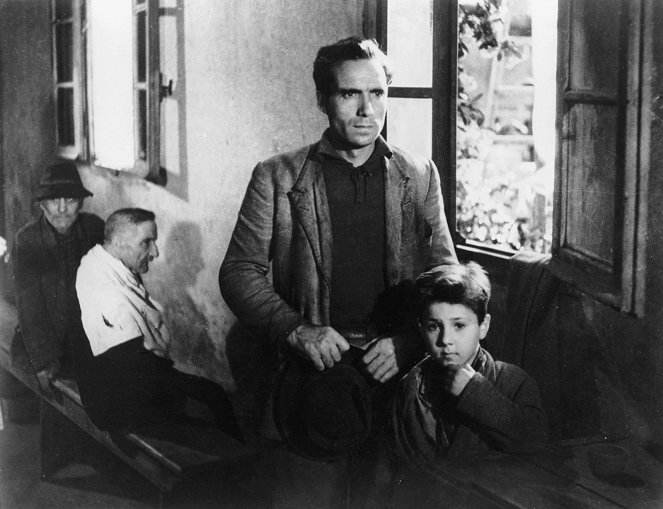
Epic movies and other forms of American drama in the 1950s
In the early 1950s, the fight against communism in the US was at its height, and a series of entertainment industry executives ended up blacklisted due to a crackdown led by the feared Senator Joseph McCarthy. TV became a major competitor for movie studios, with the number of sets increasing rapidly in American households, leading to a decline in cinema attendance. What producers thought of television was evident in the satirical drama A Face in the Crowd (1957), which criticised the medium’s tendency to manipulate people. The desire to keep audiences in theatres forced filmmakers to adopt a number of innovations, most of which turned out to be short-lived gimmicks, such as interactive horror screenings, stereoscopic films that had to be viewed with Polaroid 3D glasses, or panoramic films with Cinerama technology projected on a wide curved screen that used the audience's peripheral vision. The drive-in cinema was a big boom, and another major event was the birth of the CinemaScope system, which was used to shoot widescreen films, but their popularity lasted only until the 1960s. The most enduring strategy for luring audiences to the cinema was to continue improving the film's colour image and sound, to work with controversial and daring themes not seen on TV, and to target teenagers both thematically and through new stars.
Another part of the strategy was to make expensive big-budget epics, one of the first being the circus film The Greatest Show on Earth (1952), whose director, Cecil B. Demille, would go on to make the seven Oscar-nominated biblical drama The Ten Commandments (1956), a remake of his own 1923 film. It was followed by other biblical or adventurous historical epic dramas, such as Henry Koster's The Robe (1953), William Wyler's Ben-Hur (1959), which won a record eleven Oscars, and Stanley Kubrick's Spartacus (1960), which won four Oscars. Other great narrative films were the historical dramas Quo Vadis by Mervyn LeRoy (1951), Julius Caesar by Joseph L. Mankiewicz (1953), The Egyptian by Michael Curtiz (1954), Land of the Pharaohs by Howard Hawks (1955), and War and Peace by King Vidor (1956). In contrast, George Stevens's spectacular, ten-Oscar-nominated family saga Giant (1956) and David Lean's seven-Oscar-winning war drama The Bridge on the River Kwai (1957) dealt with more recent history.
Among Elia Kazan's greatest hits were the psychological drama A Streetcar Named Desire (1951), which won four Oscars out of twelve nominations, followed by the Oscar-winning East of Eden (1955), which focused on an insecure young man and his struggle to find favour with his strict father and protégé brother. Nicholas Ray's drama Rebel Without a Cause (1955) also focused on the world of torn adolescents, The Wild One (1953) featured a teenage motorcycle gang leader who falls in love with the daughter of a hostile policeman, and Blackboard Jungle (1955) dealt with the struggle between teachers and school delinquents. Joseph L. Mankiewicz's six-Oscar-winning drama All About Eve (1950) was set in a theatrical backstage, while Robert Aldrich's The Big Knife (1955) was a devastating glimpse behind the scenes of filmmaking.
A satirical portrait of Hollywood, Billy Wilder's celebrated drama Sunset Boulevard (1950), was also an insight on the superficiality of fame and faded movie stars that turned in three of its eleven Oscar nominations. The same director then made the drama Ace in the Hole (1951), whose story revolved around a pragmatic journalist who stopped at nothing in his pursuit of sensation. Richard Brooks's Cat on a Hot Tin Roof (1958), a drama about the complicated relationships within a family of Southern cotton plantation owners, garnered six Oscar nominations, while Fred Zinnemann's The Nun's Story (1959), inspired by the true story of a Belgian nun, was nominated eight times. 12 Angry Men by Sidney Lumet (1957) portrayed the dramatic deliberations of a jury over a seemingly straightforward murder case, while the protagonist of The Three Faces of Eve (1957) suffered from a rare personality disorder. The films No Way Out (1950), Sayonara (1957) and The Defiant Ones (1958) dealt with the theme of racial prejudice, while The Man with the Golden Arm (1955) and Bigger Than Life (1956) opened up the issue of drug addiction.
The highlights of melodrama in the 1950s include the films of director Douglas Sirk, whose Magnificent Obsession (1954), Interlude (1957), and Imitation of Life (1959) were remakes of earlier melodramas directed by John M. Stahl. Among his best-known works were All I Desire (1953), in which the protagonist returns to the husband and three children she had run away from years earlier, and All That Heaven Allows (1955), whose widowed heroine's intention to marry a much younger man from a lower social class is criticized by her offspring and friends, and Written on the Wind (1956), the story of two men and their problematic relationships with one woman, where jealousy, impotence and alcoholism played a role. Other notable romantic dramas include George Stevens's six-Oscar-winning A Place in the Sun (1951) and Vincent Minnelli's five-Oscar-winning The Bad and the Beautiful (1952), John Ford's two-Oscar-winning The Quiet Man (1952), George Cukor's musical A Star Is Born (1954), nominated to six statuettes, Delbert Mann's four-award-winning Marty (1955), and Leo McCarey's four-times-nominated An Affair to Remember (1957). Later, however, the prolific genre of melodrama began to be replaced by more realistic dramas of other types.
12 Angry Men (1957)
Photo © 1957 United Artists / Metro-Goldwyn-Mayer
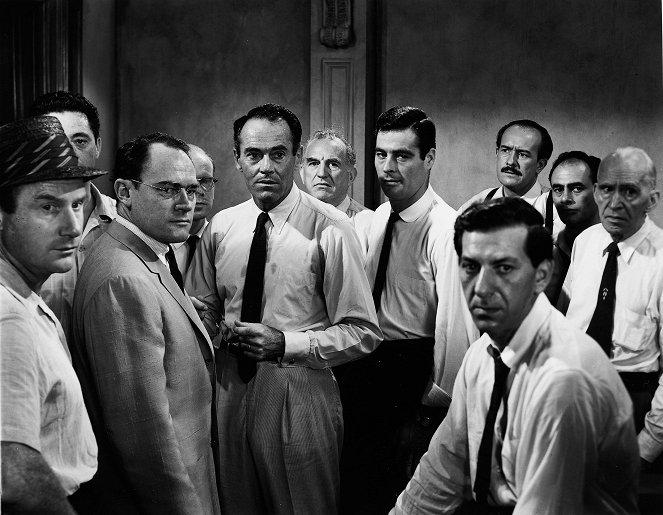
Drama in the 1960s and the end of classical Hollywood
In America, the 1960s was a time of protests for human rights and against the Vietnam War, the assassination of President Kennedy and Martin Luther King, the space race, rock music, the hippie movement, and the sexual revolution. With regards to cinema, there was also the popularisation of colour TV sets, the opening of the first multiplexes in addition to regular cinemas and, most importantly, film studios began to be owned by multinational companies due to the financial problems related, among other things, to the continuous decline in audience attendance. This led to the collapse of the studio system in the second half of the decade, which opened the door to the New Hollywood era, defined by the emergence of a new generation of filmmakers who revitalized the medium with a surge of vibrant creative energy and a passion for the artistic values of film. More space was also given to independent directors and producers, as well as to foreign films, which had a considerable influence on the shape of American cinema in those days. Filmmakers explored new genre and stylistic approaches, and the abolition of the Production Code allowed them to reach a greater degree of realism by depicting more overt displays of violence and sexuality and considerably expanding the range of themes. Many of the of the productions of the 1960s foreshadowed the development of American film for decades to come.
Continuing the trend of Hollywood epics, films such as Nicholas Ray's King of Kings (1961), David Lean's seven-Oscar-winning Lawrence of Arabia (1962) and the five-Oscar-winning Doctor Zhivago (1965), as well as Joseph L. Mankiewicz Cleopatra (1963), which at the time was the most expensive big screen film ever made – though the enormous problems with its production would prevent the creation of similarly megalomaniacal projects for many years. After the significant financial failure of the historical drama The Fall of the Roman Empire (1964), the last of this series of expensive epics was the biblical drama about the life of Jesus Christ, The Greatest Story Ever Told (1965). Other major films of the 1960s include Robert Mulligan's three Oscar-winning courtroom drama To Kill a Mockingbird (1962), told from a child's perspective and dealing with themes of rape and racial intolerance, Stanley Kubrick's romantic Lolita (1962), which explored the theme of paedophilia, and Mike Nichols's five Oscar-winning psychological drama Who's Afraid of Virginia Woolf? (1966), based on the bitter arguments of a married couple. Not to be forgotten are Robert Rossen's nine-Oscar-nominated billiards drama The Hustler (1961), William Wyler's five-Oscar-nominated The Children's Hour (1961), Otto Preminger's Advise and Consent (1962) and The Cardinal (1963), Martin Ritt's three-Oscar-nominated three-generation drama Hud (1963), and Stuart Rosenberg's prison drama Cool Hand Luke (1967).
Sidney Lumet was a prominent figure of the 1960s. His romantic drama The Fugitive Kind (1960) focused on the love affairs of a charismatic drifter in the American South, while his psychological drama Long Day's Journey into Night (1962) depicted a day in the troubled life of a family, The Pawnbroker (1964) told the story of a traumatised shopkeeper who survived the Holocaust, Fail-Safe (1964) warned of the threat of nuclear conflict, and The Hill (1965), a British anti-war film, criticised the unscrupulous methods of military commanders who abused their power. Similarly influential was director Stanley Kramer, whose two courtroom dramas, the four-Oscar-nominated Inherit the Wind (1960) and the eleven-Oscar-nominated Judgment at Nuremberg (1961), dealt with the origins of human existence in the former and Nazi war crimes in the latter, while his Guess Who's Coming to Dinner (1967), which received ten Oscar nominations, was a comedic conversational drama where a white married couple meets their daughter's black boyfriend. Director Elia Kazan continued his dramatic work, adding Wild River (1960), Splendor in the Grass (1961), America, America (1963) and The Arrangement (1969) to his filmography.
One of the key films from the early days of New Hollywood was Dennis Hopper's two Oscar-nominated Easy Rider (1969), which also went down in history as a cornerstone of the road-movie genre thanks to its tale of the freewheeling, drug-and-rock-fuelled journey of a pair of rebellious bikers. Another film that captured the atmosphere of the time with similar eloquence was John Schlesinger's three Oscar-winning Midnight Cowboy (1969), about two men living on the fringes of society. The comedy drama The Graduate (1967), directed by Mike Nichols and nominated for seven Oscars, was also groundbreaking with the story of a college student who begins a secret love affair with an older married woman, only to fall in love with her daughter. In addition, other important new directors began to come to the fore, including Robert Altman (That Cold Day in the Park, 1969), William Friedkin (The Boys in the Band, 1970), Arthur Penn (the two Oscar-winning The Miracle Worker, 1962), John Cassavetes (1968's Faces, 1970's Husbands), John Frankenheimer (the three-Oscar-winning Grand Prix, 1966), and Sydney Pollack (the nine-Oscar-nominated drama They Shoot Horses, Don't They?, 1969).
Midnight Cowboy (1969)
Photo © United Artists

British Social Drama and the French New Wave
In the UK, the left-wing literary movement of “Young Angry Men” made its mark on cinema in the late 1950s and early 60s, leading to the emergence of social-realist films about the lives of working-class people, with figures like Tony Richardson and Lindsay Anderson becoming the movement’s leading representatives. In the drama Look Back in Anger (1958) the protagonist was a perpetually disgruntled street vendor from a candy stand, in Saturday Night and Sunday Morning (1960) and The Angry Silence (1960) the protagonists were factory workers, and in The Entertainer (1960) the protagonist was a vain, bankrupt theatre entrepreneur, while the protagonists of A Taste of Honey (1961), The Loneliness of the Long Distance Runner (1962) and If... (1968) were teenagers. Other notable dramas include John Schlesinger’s A Kind of Loving (1962), Darling (1965) and Far from the Madding Crown (1967), while Ken Loach made his debut with Kes (1969). Many historical dramas about European rulers were also popular and appreciated, for example, Becket (1964) received twelve Oscar nominations, The Lion in Winter (1968) won three Oscars, and A Man for All Seasons (1966) won six golden statuettes. Other British dramatic films of note include Room at the Top (1959), This Sporting Life (1963), The Servant (1963), Othello (1965), Accident (1967), To Sir, with Love (1967) and The Prime of Miss Jean Brodie (1969).
In France, there were several filmmakers who rebelled against the sedentary domestic cinema and conventional filmmaking methods of the time and began to target a young intellectual audience, drawing on the atmosphere of the late 1950s and early 60s and on foreign trends, discovering new approaches to making films and experimenting with their form and narrative style. The first film of the French New Wave is the drama Le Beau Serge by Claude Chabrol (1958), who went on to make The Cousins (1959), Landru (1963) and The Champagne Murders (1967), among others. But the most prominent figures of this movement would be François Truffaut, who made his debut with The 400 Blows (1959), and went on to make a name for himself with Jules and Jim (1962), The Soft Skin (1964) and Stolen Kisses (1968), and Jean-Luc Godard, who found success with the crime drama Breathless (1960) and then went on to make a name for himself with My Life to Live (1962), Contempt (1963), The Married Woman (1964) and Crazy Pete (1965), among others. Other representatives of the movement were Alain Resnais (Hiroshima, My Love, 1959, Last Year at Marienbad, 1961), Jacques Rivette (The Nun, 1966, Mad Love, 1969), Eric Rohmer (Sign of the Lion, 1962) and Louis Malle (The Fire Within, 1963). Other directors who made films in France at the same time include: Jacques Demy (Bay of Angels, 1963) and Agnès Varda (Cleo from 5 to 7, 1962, and Le Bonheur, 1965).
Pierrot le Fou (1965)
Photo © Rome Paris Films
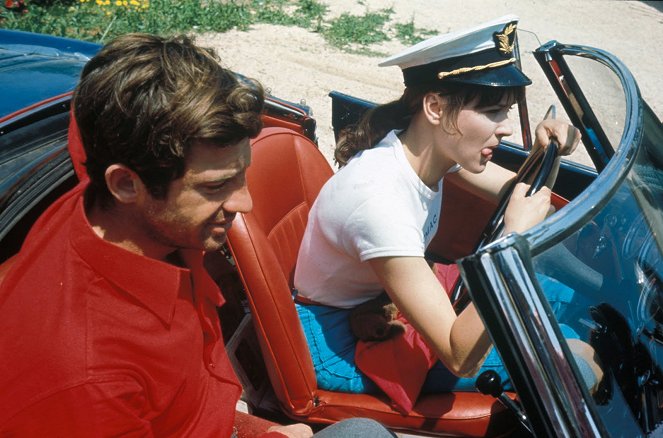
European and non-European dramas of the 1950s and 60s
Polish cinema did not recover from the horrors of the war until the late 1950s, when one of its most prominent representatives was director Andrzej Wajda, who burst onto the scene with the war trilogy A Generation (1955), Canal (1957) and Ashes and Diamonds (1958). He would go on to make, among others, the historical epic The Ashes (1965) and the drama Everything for Sale (1969). Other representatives of Polish cinema were Jerzy Kawalerowicz (Mother Joan of the Angels, 1961) and Roman Polanski (Knife in the Water, 1962). In Hungary, another group of filmmakers drew attention to themselves, including Miklós Jancsó (The Round-Up, 1966), István Szabó (Father, 1966) and István Gaál (The Falcons, 1970).
In the Soviet Union, the film industry underwent a fundamental change after Stalin's death in 1953, when cinematic works could finally move away from the confining popular and patriotic socialist realism, and from the second half of that decade, works that criticized the war and reflected its negative impact on the landscape, society and people's individual destinies could be created. In this regard, it’s impossible not to mention the dramatic films The Cranes Are Flying by Mikhail Kalatozov (1957), Fate of a Man by Sergei Bondarchuk (1959), Ballad of a Soldier by Grigoriy Chukhray (1959), and Ivan's Childhood (1962), the directorial debut of Andrei Tarkovsky, who later became famous for his historical drama Andrei Rublev (1966). Other notable films include The Lady with the Dog (1960), Hamlet (1964) and Shadows of Forgotten Ancestors (1964), as well as the more than seven-hour epic War and Peace (1966).
In Sweden, Ingmar Bergman retained his position as an internationally renowned filmmaker and, after the romantic dramas To Joy (1950), Summerplay (1951) and Summer with Monica (1953), made his best-known works Wild Strawberries (1957) and The Seventh Seal (1957). He followed these with, among others, Brink of Life (1958) and The Virgin Spring (1960), as well as an intimate trilogy of anguish and conversations with God consisting of Through a Glass Darkly (1961), Winter Light (1963) and The Silence (1963), in which he dealt primarily with human existence and the psyche, though it was in Persona (1966) where he would address specifically the psychology of women. His next three films, known as the Island Trilogy, consisted of Hour of the Wolf (1968), Shame (1968), and The Passion of Anna (1969), whose main theme was partner relationships.
Spanish director Luis Buñuel made a number of dramas in Mexico, such as The Young and the Damned (1950), This Strange Passion (1953), The River and Death (1955), Nazarin (1959) and The Young One (1960), but his most important work would be Viridiana (1961), which satirized the mentality and hypocrisy of the Church through the story of a novice visiting her uncle. Buñuel went on to direct several French-Italian co-productions (Diary of a Chambermaid in 1964, Belle de Jour in 1967), and returned to his native Spain for the drama Tristan (1970). Other European dramatic works that stood out include: the French romantic dramas The Earrings of Madame de... (1953) and Les liaisons dangereuses (1959), the Danish Carl Theodor Dreyer's The Word (1955), the Spanish-Italian co-production Death of a Cyclist (1955), Zorba the Greek (1964) and Franco Zeffirelli's British-Italian co-production of Romeo and Juliet (1968).
During the American occupation of Japan, there were several directors influenced by American cinema who established themselves, most notably Akira Kurosawa, who made several dramas in the 1940s that enabled Japanese cinema to break into the West. Although he is most famous for his samurai films, he also directed numerous noteworthy dramas, such as Scandal (1950), The Idiot (1951), To Live (1952), I Live in Fear (1955), The Lower Depths (1957) and the later Red Beard (1965). Yasujirô Ozu's work includes the dramas Early Summer (1951) and Early Spring (1956), but his best-known work is Tokyo Story (1953), in which the problems of the time are captured through a story about the clash of several generations. Other films worth mentioning include Kaneto Shindō's The Island (1960), which described the cyclical life of a family inhabiting a small island, or the melodramas of Kenji Mizoguchi Saikaku: Life of a Woman (1952) and Legend of Bailiff Sansho (1954).
Persona (1966)
Photo © Svensk Filmindustri (SF)

Italian cinema in the 1960s and the Czechoslovak New Wave
1960 was an exceptional year in Italian filmmaking, with the release of Federico Fellini's La Dolce Vita, Michelangelo Antonioni's L'avventura and Luchino Visconti's Rocco and His Brothers. Fellini, already famous in the 1950s for I Vitelloni (1953), The Road (1954) and Nights of Cabiria (1957), depicted the moral decline of the upper Italian social class in La Dolce Vita and thus laid the foundation for modern Italian cinema. After that, he was also very successful with 8½ (1963), in which he portrayed creative crisis through the story of a burnt-out filmmaker. Antonioni's formally remarkable and deliberately misleading L'avventura also criticized the social elites and it became the first in a thematic tetralogy that also included The Night (1961), The Eclipse (1962) and Red Desert (1964). But his international breakthrough came with Blow-Up (1966), in which he captured the atmosphere of the 1960s against the backdrop of the story of an indulgent photographer who may have accidentally photographed an attempted murder. Also notable at the same time were dramas by Pier Paolo Pasolini (The Gospel According to St. Matthew, 1964), Bernardo Bertolucci (Before the Revolution, 1964, The Conformist, 1970), Marco Bellocchio (Fist in His Pocket, 1965), and Ermanno Olmi (The Job, 1961, The Fiances, 1963).
In the 1960s, Czechoslovakia began to produce world-class films by a generation of filmmakers known as the Czechoslovak New Wave, whose prolific output was prematurely ended by the invasion of Soviet troops in 1968. These filmmakers absorbed modern trends in European cinema and shaped them as distinctive auteur personalities, often dealing with morality in society, resorting to various experiments, casting non-actors and building a specific style of humour. In terms of drama, the leading exponents of this movement include: Štefan Uher (The Sun in a Net, 1962), Ján Kadár and Elmar Klos (The Shop on Main Street, 1965), Jiří Menzel (Closely Watched Trains, 1966), Věra Chytilová (Daisies, 1966), Jan Němec (The Party and the Guests, 1966), Juraj Herz (The Cremator, 1968), and Pavel Juráček (Case for a Rookie Hangman, 1969). Other directors who made significant dramatic films in this period include Jiří Krejčík (Higher Principle, 1960), Karel Kachyňa (Coach to Vienna, 1966), František Vláčil (Marketa Lazarová and The Valley of the Bees, 1967), Vojtěch Jasný (All My Compatriots, 1968), Otakar Vávra (Witchhammer, 1969), and Zdenek Sirový (Funeral Ceremonies, 1969).
Blow-Up (1966)
Photo © Bridge Films
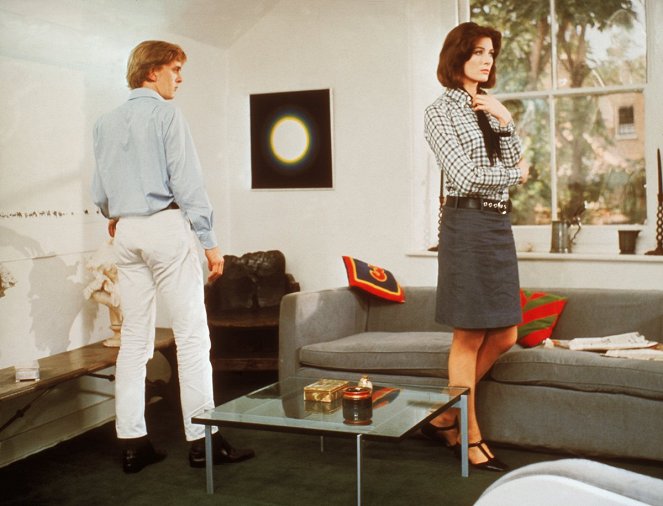
The dramas of New Hollywood in the 1970s
Cold War paranoia and the Watergate affair culminated in Hollywood with a series of conspiracy thrillers, box office juggernauts in the form of genre hits and summer blockbusters, and American cinema started to address the Vietnam War. In the same year, Michael Cimino's psychological war drama The Deer Hunter (1978), about a group of men traumatized by the horrors of war, won five Oscars, and Hal Ashby's anti-war romantic drama Coming Home (1978), where the female lead falls in love with a disabled war veteran after her husband leaves for the Vietnam War, was nominated for eight Oscars. The direction of cinema was already fully defined by a young generation of New Hollywood filmmakers that included, among others, Bob Rafelson (Five Easy Pieces, 1970), Mike Nichols (Carnal Knowledge, 1971), Peter Bogdanovich (The Last Picture Show, 1971, nominated for eight Oscars), Jerry Schatzberg (The Panic in Needle Park, 1971), George Lucas (American Graffiti, 1973), Sydney Pollack (The Way We Were, 1973, nominated for six Oscars), John Cassavetes (A Woman Under the Influence, 1974), John Schlesinger (The Day of the Locust, 1975), Sidney Lumet (Network, 1976, which took in four out of its ten Oscars nominations), Terrence Malick (Days of Heaven, 1978), Woody Allen (Interiors, 1978), and Paul Schrader (Hardcore, 1979).
The mafia epic The Godfather (1972), directed by Francis Ford Coppola, was a major hit with both audience and critics. It told the story of the practices of a powerful criminal clan, depicting the complex web of relationships and internal rituals among the members of this closed "family", and took home three of its eleven Oscar nominations. It was followed by The Godfather: Part II (1974), which turned in six of its eleven Oscar nominations, making it one of the most successful sequels of all time. Five Oscars out of nine nominations went to the drama by Czechoslovak director Miloš Forman One Flew Over the Cuckoo's Nest (1975), a story about the maladjustment of an idiosyncratic troublemaker sentenced to stay in a mental institution who clashed with the totalitarian practices of the head nurse. Robert Benton's Kramer vs. Kramer (1979), about divorcing spouses' court battles over the custody of their children, was similarly successful. Nominated for five Oscars, Robert Altman's musical drama Nashville (1975) was a complex satire of American life in the second half of the 1970s, touching on themes such as racism, violence, sexuality, politics, the media and obsession with fame. The atmosphere and serious social problems of the late 1960s and early 70s were reflected in Arthur Hiller's romantic drama Love Story (1970) that depicted the love story of two young people from different class backgrounds.
Alan J. Pakula's All the President's Men (1976) won four Oscars for its realistic behind-the-scenes look at a newspaper newsroom through the story of two investigative journalists who gradually uncover the government's hidden truth behind the Watergate affair. The sports drama Rocky (1976), a boxing film about an underdog seeking the world heavyweight title, took in three out of its ten Oscar nominations, while Martin Scorsese's Taxi Driver (1976), nominated for four statuettes, looked at the morally decadent environment of New York City through the eyes of a reclusive war veteran, and in Hal Ashby's comedy drama Being There (1979), a simple-minded gardener ends up making a political career for himself through a series of coincidences. Also worth mentioning are the romantic drama The Great Gatsby (1974) and the musical romantic drama A Star Is Born (1976), as well as the musical Saturday Night Fever (1977), which drew on the fashion of the discos.
One Flew over the Cuckoo's Nest (1975)
Photo © United Artists
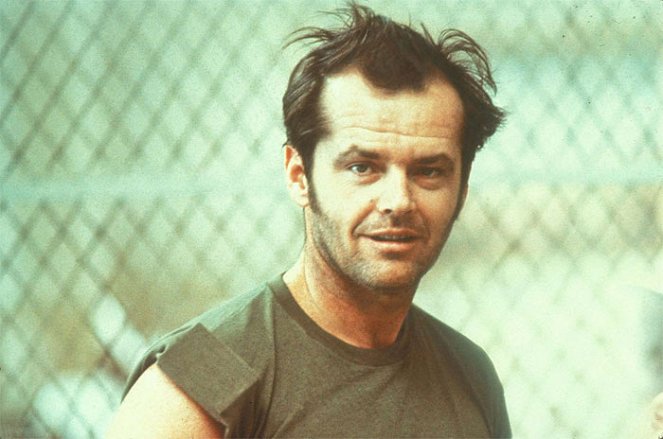
Cinema of Moral Unrest and Other European Films of the 1970s
In Germany, a manifesto written in the 1960s calling for the establishment of a film school gave birth to a new wave of directors such as Werner Herzog (Signs of Life, 1968), Wim Wenders (Summer in the City, 1971, Alice in the Cities, 1974, and Kings of the Road, 1976), Volker Schlöndorff (A Free Woman, 1972, The Tin Drum, 1979), and Rainer Werner Fassbinder (Fear Eats the Souls, 1974, The Marriage of Maria Braun, 1979). In Poland, the second half of the 1970s saw the founding of the "Cinema of Moral Unrest", an artistic movement that expressed the filmmakers' dissatisfaction with the state of affairs imposed by the communist regime that prevented the portrayal of certain social issues by restricting creative freedom. The common denominator of this movement was social themes and ethical problems, the relationship between man and the state, the reflection on the loss of ideals and an emphasis on moral responsibility. Its leading representatives were Andrzej Wajda (Man of Marble, 1977), Feliks Falk (Top Dog, 1978), Krzysztof Kieślowski (Camera Buff, 1979), Agnieszka Holland (Provincial Actors, 1979) and Krzysztof Zanussi (The Constant Factor, 1980).
The greater openness of cinema to sexual issues was aptly reflected in Bernardo Bertolucci's controversial Italian-French love drama Last Tango in Paris (1972), while the explosion of violence was represented by Stanley Kubrick's British-American A Clockwork Orange (1971), a satirical critique of totalitarianism told from the point of view of the violent leader of a gang of teenage troublemakers. Major filmmakers like the Italians Luchino Visconti (Death in Venice, 1971, Conversation Piece, 1974) and Federico Fellini (Amarcord, 1973, Orchestra Rehearsal, 1978), as well as the Swedish great Ingmar Bergman all built on previous works. Bergman in particular, after the psychological dramas Cries and Whispers (1972), Scenes from a Marriage (1973) and Autumn Sonata (1978), announced that Fanny and Alexander (1982) would be his last feature, though he would make several more TV films afterwards. This family fresco inspired by childhood and childhood imagination was the culmination of his work and was even awarded four Oscars. Other notable European works include the British romantic dramas The Go-Between (1971) and Ryan's Daughter (1970), and the Spanish film The Spirit of the Beehive (1973), which depicted the state of the Spanish countryside recovering from the Civil War through a child's lens.
Man of Marble (1977)
Photo © Film Polski Film Agency
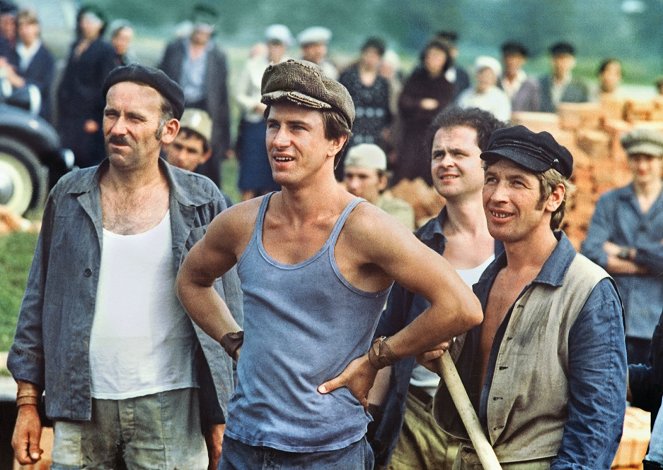
The Resurrection of the Hollywood System and American Drama in the 1980s
In the American cinema of the 1980s, the amount of filmmaking experimentation decreased substantially compared to the previous decade, as the Hollywood system returned to its former position of strength, resulting in auteur directors’ gradually losing influence, while film studios and producers regained strength. The film market gravitated towards blockbusters, attracting audiences through massive marketing campaigns that heavily targeted teenagers. Action films became a phenomenon, but comedies, horror and sci-fi also flourished. This also was the beginning of the era of the sequel, where many successful films would become multi-part series. The formal aspect of the films was influenced by the aesthetics of music videos on MTV, not to mention the fact that many new directors came to film from the background of music videos and advertising. The popularization of videotapes was also a revolution, with the first video rental store opening in 1985. At the same time, there was a steady increase in the number of multiplexes, cinemas with many screens built mostly in urban shopping centres.
Martin Scorsese's Raging Bull (1980), a biographical sports drama about a middleweight boxing champion, took in two out of its nine Oscar nominations. Scorsese then followed up the billiard drama The Hustler (1961) with its sequel The Color of Money (1986), and later caused an impression with the biblical drama The Last Temptation of Christ (1988). Miloš Forman's Ragtime (1981), which depicted the transition between the 19th and 20th centuries against the backdrop of several stories, was nominated for eight Oscars, but his major success came with the drama Amadeus (1984), which was awarded eight Oscars for the story of the rivalry between the genius composer Wolfgang Amadeus Mozart and his jealous rival Antonio Salieri. Forman's next project was a period drama about the seductive affairs of an ageing viscount called Valmont (1989), and Stephen Frears' Dangerous Liaisons (1988) focused on the same character and story. Among the great biographical dramas of the 1980s were Warren Beatty's Reds (1981), which won three Oscars out of twelve nominations, and Richard Attenborough's Gandhi (1982), a magnificent portrait of the famous Indian pacifist and political and spiritual leader. Social drama was combined with music and dance in Flashdance (1983), a film nominated for four Academy Awards whose director, Adrian Lyne, would later become famous for his romantic drama Nine ½ Weeks (1986).
Steven Spielberg delved into the waters of serious drama with the period film The Color Purple (1985), about the troubled life of an African-American woman in the American South, and received eleven Oscar nominations. Spielberg got six more nominations with the war drama Empire of the Sun (1987), which depicted the events in a Japanese prison camp from the perspective of an 11-year-old boy. Sergio Leone's last film was the mafia drama Once Upon a Time in America (1984), a monumental fresco about the life of a New York gangster. David Lynch's The Elephant Man (1980), nominated for seven Oscars, told the story of the troubled life of a disfigured man, while his mystery-crime-drama Blue Velvet (1986) focused on the apparent idyll of small-town America, beneath the surface of which lay a world of violence, psychopaths and sexual perversions. Barry Levinson's Rain Man (1988), a road-movie about two men, a young scheming businessman and his autistic older brother who were unaware of each other until adulthood, received four Academy awards. Robert Redford's Ordinary People (1980), an intimate psychological drama about the members of one family, Bruce Beresford's Driving Miss Daisy (1989), the story of the friendly relationship between a wealthy widow and her black chauffeur, and Hugh Hudson's sports drama Chariots of Fire (1981), starring a pair of Olympic athletes, all earned the same number of Oscars. Other sports dramas include The Natural (1984) and Field of Dreams (1989), which was spiced-up with a touch of fantasy.
Alan J. Pakula's drama Sophie's Choice (1982), which took in one of its six Oscars nominations, used the story of its Polish protagonist to show the corrosive effect of Nazism on people's lives. Other films in contention for golden statuettes were James L. Brooks' Terms of Endearment (1983), which dealt with a mother-daughter relationship, Barbra Streisand's musical drama Yentl (1983), whose protagonist impersonated a man in her desire to study religion, and Sydney Pollack's Out of Africa (1985), a romance between a coffee plantation owner and a charismatic hunter. Director Peter Weir received an enthusiastic response for Dead Poets Society (1989), a film about a peculiar teacher, Steven Soderbergh made a successful debut with Sex, Lies and Videotape (1989), and Woody Allen succeeded with his comedy dramas Hannah and Her Sisters (1986) and Crimes and Misdemeanors (1989), in addition to his serious psychological dramas September (1987) and Another Woman (1988). Other notable dramas include those made by directors such as Mark Rydell (On Golden Pond, 1981), Sidney Lumet (The Verdict, 1982), Francis Ford Coppola (Rumble Fish, 1983), Philip Kaufman (The Right Stuff, 1983, The Unbearable Lightness of Being, 1988), Hector Babenco (Kiss of the Spider Woman, 1985, Ironweed, 1987), Tom Moore ('night Mother, 1986), Oliver Stone (Wall Street, 1987), Jonathan Kaplan (The Accused, 1988), and Spike Lee (Do the Right Thing, 1989).
Ordinary People (1980)
Photo © Paramount Pictures
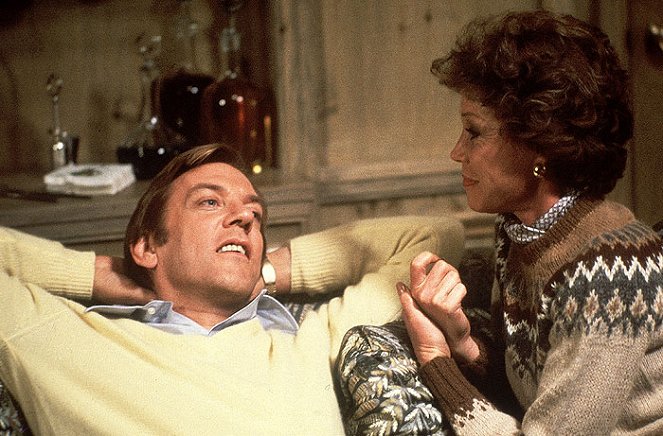
European drama of the 1980s
French cinema in the 1980s was fundamentally revitalised by the work of directors such as Leos Carax (Boy Meets Girls, 1984), Jean-Jacques Beineix (Betty Blue, 1986), and Luc Besson (The Big Blue, 1988) with films that stood out for their distinctive visual style. In Germany, the directors who had successfully established themselves in the 1970s, especially Rainer Werner Fassbinder (Lola, 1981, Veronika Voss, 1982), Volker Schlöndorff (Swann in Love, 1984), Wim Wenders (1984's co-production Paris, Texas, and 1987's drama about an angel in love Wings of Desire), and Werner Herzog (Woyzeck, 1979), were among the top dramatic filmmakers. In Poland, two of the most acclaimed directors were Andrzej Wajda (Man of Iron, 1981) and Krzysztof Kieślowski, who, after Blind Chance (1981) and No End (1985), made A Short Film About Killing (1987) and A Short Film About Love (1988), a pair of dramas that followed on his television series Dekalog (1989-1990), which dealt with the Ten Commandments in ten episodes.
One of Italy's greatest talents was Giuseppe Tornatore, whose autobiographical Oscar-winning film Cinema Paradiso (1988) was a nostalgic tribute to cinema and its former glory. In Denmark, Lars von Trier made his mark with his trilogy The Element of Crime (1984), Epidemic (1987) and Europa (1991), where he explored the spiritual dimension of the space we inhabit. In Spain, some of the most prominent dramas were directed by Carlos Saura, who had already established a strong creative position in the 1970s with films such as Anna and the Wolves (1973), Cousin Angelica (1974), Cria Cuervos (1976), and Elisa, My Life (1977), which were followed in the 1980s by his musical dramas Blood Wedding (1981), Carmen (1983), and A Love Bewitched (1986). The Spanish drama The Holy Innocents (1984), by Mario Camus, was also notable. Regarding other European countries, the British films Caravaggio (1986) and The Killing Fields (1984) and the romantic dramas A Room with a View (1985) and Maurice (1987) by James Ivory, the Yugoslavian drama When Father Was Away on Business (1985) by Emir Kusturica or the Hungarian films The Prefab People (1982), Almanac of Fall (1985) and Damnation (1988) by Béla Tarr were all able to attract strong attention.
Paris, Texas (1984)
Photo © Road Movies Filmproduktion
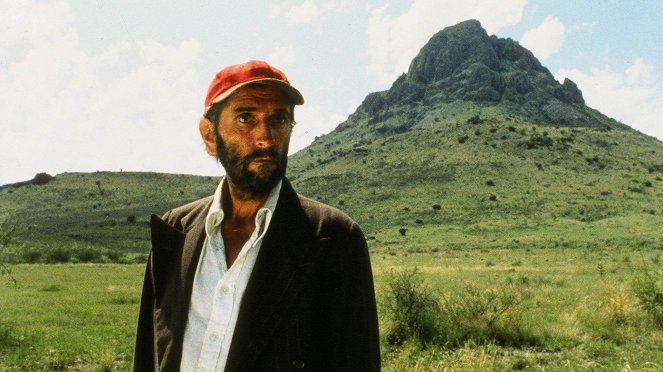
The beginning of the digital age and American drama in the 1990s
Hollywood put even more emphasis on producing big box-office hits in the 1990s than in the previous decade, spending huge sums on marketing campaigns, famous stars and digital visual effects. This was also the time when digital cameras entered the industry, making filmmaking cheaper, easier and more accessible to more directors, first catching on among independent filmmakers. This crystallized the differences between films made by Hollywood studios and independent filmmakers even more clearly, with some of them interspersing their independent projects (known as indie films) with collaborations with studios (e.g. Gus Van Sant, director of the 1991 indie drama My Own Private Idaho and the 1997 Oscar-winning studio drama Good Will Hunting), while others managed to remain completely independent (e.g. Jim Jarmusch, director of the 1995 anti-western drama Dead Man). The VHS market continued to be a hugely successful business, with many films being even released directly on video without having passed through cinema screens, but 1997 saw the appearance of the DVD media, which was more durable than tape and often included bonus material. 1996 saw the first HDTV broadcasts, which would lead to the development of new TV sets and the home cinema. The 1990s also saw the birth of the Internet, a computer system for the exchange of data, and thus another potential means for the promotion and distribution of films.
The most successful film of the 1990s was James Cameron's eleven Oscar-winning Titanic (1997), which, in addition to the sinking of the famous ship, told the story of the love between two young people from different social classes, and became the highest-grossing film of all time. Six of thirteen Oscar nominations went to Robert Zemeckis's Forrest Gump (1994), which depicted the Vietnam War from the point of view of a simpleton who, on his life's journey, was personally present at the most pivotal events in American history from the 1950s to the 1980s. Steven Spielberg first achieved success with Schindler's List (1993), a seven-Oscar-winning drama about a German businessman who rescues of hundreds of Jews from concentration camps, followed by Amistad (1997), a four-statuette-nominated historical drama about a ship mutiny of black slaves, and finally with the war drama Saving Private Ryan (1998), which received five Oscars out of eleven nominations for its story of a rescue mission that begins with the Normandy landings. A total of eleven Oscar nominations were shared between two prison films directed by Frank Darabont: The Shawshank Redemption (1994), which dealt with the fate and escape of a wrongly convicted bank clerk, and The Green Mile (1999), in which a former warden recalls his experiences with prisoners and colleagues.
Two Oscars went to Jonathan Demme's courtroom drama Philadelphia (1993), which dealt with prejudice against people with AIDS. The same number of awards, but out of nine nominations, went to Ron Howard's Apollo 13 (1995), which charted the course of a failed manned flight to the moon. One statuette each went to the dramas Scent of a Woman (1992), where a blind man is saved from suicide by his friendship with a young guardian, Leaving Las Vegas (1995), about an alcoholic screenwriter, and Dead Man Walking (1995), a film about the relationship between a man on death row and a social worker who begins to keep him company in prison. Nine awards went to Anthony Minghella's The English Patient (1996), a romantic drama about a wounded soldier telling his nurse about his memories of World War II, while Sam Mendes's American Beauty (1999), a dark-humour satirical drama about the lives and disillusions of middle-class suburbanites, finished with five awards. Director Paul Thomas Anderson made a name for himself first with Boogie Nights (1997), a drama set in the porn industry, and then with Magnolia (1999), where he wove together the interconnected stories of several characters.
Joel Schumacher's drama Falling Down (1993) told the story of the sudden outburst of aggression in a man unable to cope with his accumulated frustration and stress, David Fincher's Fight Club (1999) offered an anarchic and nihilistic critique of the system and the commercial world, and Stanley Kubrick's Eyes Wide Shut (1999) depicted the story of a married couple going through a sexual revival. Robert Redford followed his successful A River Runs Through It (1992) with a drama about the corrupt behind-the-scenes of the TV show Quiz Show (1994), and then with The Horse Whisperer (1998), a romantic drama about a wrangler able to heal traumatised animals. Other romantic dramas worthy of mention include Barbra Streisand's The Prince of Tides (1991), Spike Lee's Jungle Fever (1991), Gillian Armstrong's Little Women (1994), Ang Lee's Sense and Sensibility (1995), Roman Polanski's Bitter Moon (1992), Clint Eastwood's The Bridges of Madison County (1995), Adrian Lyne's Lolita (1997), and Lasse Hallström's The Cider House Rules (1999). Glengarry Glen Ross (1992), Short Cuts (1993), The Ice Storm (1997), Sling Blade (1996), The Rainmaker (1997), October Sky (1999), The Talented Mr. Ripley (1999) and Summer of Sam (1999) were also significant dramas.
The Shawshank Redemption (1994)
Photo © 1994 Columbia Pictures

Dogma 95 and other international dramas of the 1990s
In Denmark, the avant-garde movement Dogma 95 was founded as a response to the superficial mainstream of world cinema. Its founders pledged to achieve realism through ten rules that included filming in authentic locations and with authentic props, shooting with handheld cameras, forbidding action scenes, avoiding genres and historical themes, and prohibiting the use of additional music and special lighting. Its main representatives were Thomas Vinterberg (The Celebration, 1998) and Lars von Trier (The Idiots, 1998). Other notable representatives of Danish cinema include Trier's drama Breaking the Waves (1996) and Susanne Bier's Family Matters (1994). In Belgium, the brothers Jean-Pierre and Luc Dardenne made their mark and became award-winning representatives of European drama with I'm Thinking of You (1992), The Promise (1996), and Rosetta (1999). Kar-wai Wong's Hong Kong romantic dramas, especially Chungking Express (1994), Fallen Angels (1995), Happy Together (1997), and In the Mood for Love (2000), also had a significant international impact.
The seminal works of British drama include, among others, James Ivory's The Remains of the Day (1993), the Oscar-nominated story of a distinguished butler, Mike Leigh's Secrets & Lies (1996), a five-Oscar-nominated tale of a mother and daughter reunited after many years, and Danny Boyle's Trainspotting (1996), a generational manifesto famous for its drug themes. Among French films, the Oscar-winning romantic drama Indochine (1992), set in the rubber plantations of colonial Vietnam, and Mathieu Kassovitz's Hate (1995), which follows the lives of three young delinquents on the streets of Paris, are particularly noteworthy. In Italy, Life Is Beautiful (1997), a comedy-drama about a Jewish waiter who for the sake of his young son treats their stay in a concentration camp as part of a birthday game, won three Oscars. Italian director Giuseppe Tornatore succeeded with The Legend of 1900 (1998), about a pianist who has never left the ship he had been born on. Spain also produced a large number of distinctive filmmakers, with Pedro Almodóvar gaining fame for his melodramatic films The Flower of My Secret (1995), Live Flesh (1997) and All About My Mother (1999), all dealing mainly with the mental processes of female characters, while Alejandro Amenábar (Open Your Eyes, 1997), Fernando Trueba (The Girl of Your Dreams, 1998) and Julio Medem (The Red Squirrel, 1993, Earth, 1996, and Lovers of the Arctic Circle, 1998) also emerged as notable auteurs.
Polish director Krzysztof Kieślowski further enhanced his fame with The Double Life of Veronique (1991), a story about the intertwined fates of two identical girls filmed in France, and the Three Colors trilogy, successively dealing with the themes of "liberty, equality, fraternity" and consisting of films named after the colours of the French flag: Blue (1993), Red (1994), and White (1994). Russian cinema flourished thanks to directors such as Pavel Chukhraj (The Thief, 1997) and Nikita Mikhalkov, whose poetically melancholic Oscar-winning drama Burnt by the Sun (1994) was set during the Stalinist purges. Hungarian director Béla Tarr expanded his filmography with the more than seven-hour epic Satantango (1994) and Werckmeister Harmonies (2000), both renowned for their long, spellbinding takes and rich layers of interpretation. A new generation of filmmakers emerged in Iran, with Jafar Panahi (The White Baloon, 1995), Abbas Kiarostami (Taste of Cherry, 1997), Majid Majidi (The Children of Heaven, 1997), and Samira Makhmalbaf (The Apple, 1998) becoming the leading representatives of that country’s cinema. Also worth mentioning are the German co-production Europa Europa (1990) by Polish director Agnieszka Holland, the three Oscar-winning Australian co-production The Piano (1993) by New Zealand director Jane Campion, Heavenly Creatures (1994) by Peter Jackson, the Czech Oscar-winning Kolya (1996) by Jan Svěrák, and the Brazilian Central Station (1998) by Walter Salles.
Trainspotting (1996)
Photo © 1996 Miramax
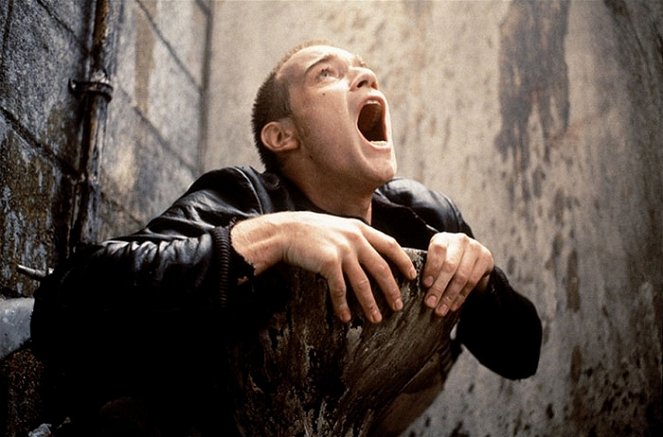
American drama after 2000
The beginning of the new millennium was marked, among other things, by the fight against terrorism, the rapid development of technology, the proliferation of the Internet and social networks, and concerns about global warming. Digital technologies became even more prevalent in cinema than in the previous decade, the biggest box-office hits (mostly visual-effect blockbusters) became in many cases multi-part film series, DVDs fully replaced the videocassette (with the new emergence of Blu-Ray discs and the first online providers of films and series), and the studios began to fight against illegal downloads of films on the Internet. The theme of terrorism permeated many films, for example Paul Greengrass's United 93 (2006) and Oliver Stone's World Trade Center (2006) were inspired by the events surrounding the attack on the World Trade Center in New York in 2001, Kathryn Bigelow's six Oscar-winning film The Hurt Locker (2008) told the story of a group of soldiers specialising in bomb defusal, and a later drama by the same director, Zero Dark Thirty (2012), revolved around the military's hunt for Osama bin Laden. The three Oscar-winning Crash (2004), by Paul Haggis, dealt with various forms of racism, while Ang Lee's Brokeback Mountain (2005), a drama about the homosexual romance between two cowboys, also raised important issues.
Darren Aronofsky's Requiem for a Dream (2000) was a powerful film that portrayed various forms of drug addiction through several stories, and the same director would later attract further attention with the romantic drama The Fountain (2006) and the sports drama The Wrestler (2008). Clint Eastwood succeeded at the Oscars with Million Dollar Baby (2004), a sports drama about a determined boxer that won in four categories, and then made a big splash with his later dramas Changeling (2008) and Gran Torino (2008). Other Oscar winners include Steven Soderbergh's four-time Oscar-winning Traffic (2000), about the fight against the drug mafia, Paul Thomas Anderson's two-time Oscar-winning There Will Be Blood (2007), an epic about the rise of an aspiring oil tycoon, and Lee Daniels's two-time Oscar-winning Precious (2009), about the troubled coming-of-age of a black teenage girl from a socially disadvantaged background.
Three of thirteen Oscar nominations went to David Fincher's The Curious Case of Benjamin Button (2008), a romantic drama about a man whose body grows younger over time due to a rare disease, and eight Oscars went to Danny Boyle's Slumdog Millionaire (2008), a drama about the life of a contestant in a science competition in India. Marc Forster's Monster's Ball (2001), a film about the relationship between a black widow and a racist prison guard who assisted in the execution of her condemned husband, Stephen Daldry's The Hours (2002), which tells the interconnected stories of three women from three different eras, and Sofia Coppola's Lost in Translation (2003), a film about loneliness in a foreign environment, all won one Oscar each. Also worth mentioning are Todd Haynes's melodrama Far from Heaven (2002), Woody Allen's Match Point (2005) and Vicky Cristina Barcelona (2008), Sam Mendes's drama about a marital crisis Revolutionary Road (2008), the courtroom drama about an ancient passion and the trials of war criminals The Reader (2008), the family drama Hachiko: Dog's Story (2009), and the sports dramas Remember the Titans (2000), Rocky Balboa (2006) and The Blind Side (2009).
Gran Torino (2008)
Photo © Warner Bros. Pictures
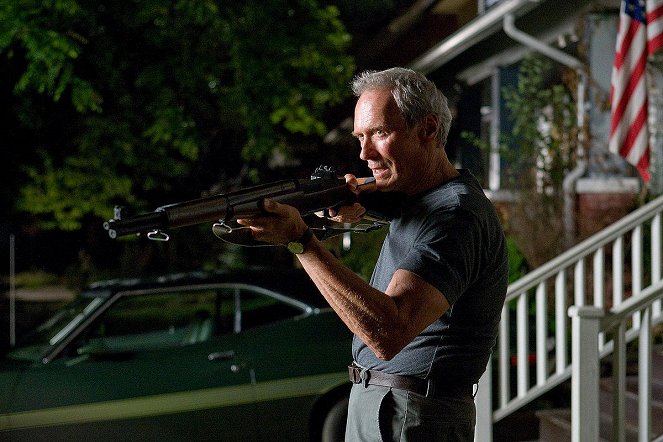
European and non-European dramas of the new millennium
In Latin America, a new stream of cinema was awakened by Brazilian director Fernando Meirelles (City of God, 2002) and the Mexican directors Alfonso Cuarón (And Your Mother Too, 2001) and Alejandro González Iñárritu, who, after the patchwork film Amores Perros (2000), made the similarly structured dramas 21 Grams (2003) and Babel (2006) in the USA. In Romania, after several years of cinematic slumber, a new generation of filmmakers called the Romanian New Wave began to emerge with a focus on minimalist realistic stories, rich in strong dramatic situations and oriented towards social issues. Its most significant directors were Cristi Puiu (The Death of Mr. Lazarescu, 2005), Corneliu Porumboiu (12:08 East of Bucharest, 2006), Cristian Mungiu (4 Months, 3 Weeks & 2 Days, 2007), and Radu Jude (The Happiest Girls in the World, 2009). In France, François Ozon (Swimming Pool, 2003, and 5x2 from 2004), Laurent Cantet (The Class, 2008) and Gaspar Noé, whose films Irreversible (2002) and Enter the Void (2009) were the subject of controversy, became important figures in dramatic cinema.
Among Danish filmmakers, it is worth highlighting Lars von Trier, who, after the stylishly minimalist Dogville (2003) and Manderlay (2005), made the controversial Antichrist (2009), and director Susanne Bier, whose films Brothers (2004) and After the Wedding (2006) became the templates for later American remakes. In Russian cinema, the names that stood out include Andrei Konchalovsky (House of Fools, 2002), Andrej Zvjagincev (The Return, 2003, The Banishment, 2007), Nikita Michalkov (12, 2007) and Alexandr Sokurov, whose Russian Ark (2002) was filmed in St. Petersburg's Hermitage in a single long take. Austrian director Michael Haneke received considerable acclaim for his dramas Piano Teacher (2001) and Caché (2005), as well as for The White Ribbon (2009), where he tells the story of evil in man, the pathological relationships in society and the birth of Nazism against the backdrop of the inhabitants of a German village. Belgian brothers Jean-Pierre and Luc Dardenne reaped success with The Son (2002), The Child (2005), and Lorna's Silence (2008); Spanish director Julio Medem broke through with Sex and Lucia (2001) and Chaotic Ana (2007), and Pedro Almodóvar expanded his filmography with Talk to Her (2002), Bad Education (2004), Volver (2006), and Broken Embraces (2009).
In Germany, Florian Henckel von Donnersmarck was successful with his Oscar-winning The Lives of Others (2006), which told the story of the household of a playwright under surveillance by the regime and the secret policeman deployed to eavesdrop on him, while Fatih Akin, whose Head-On (2004) and The Edge of Heaven (2007) were set among Turkish immigrants, and Dennis Gansel with The Wave (2008), about a school experiment that gets out of control, also became important figures in German cinema. The British social dramas Billy Elliot (2000) and Vera Drake (2004) dealt, respectively, with the story of an eleven-year-old boy attending ballet classes and with the good-hearted deeds of an illegal abortionist in post-war England. Other notable films include the controversial The Dreamers by Italian director Bernardo Bertolucci, the Swedish drama Evil (2003) and the Czech films Divided We Fall (2000), Something Like Happiness (2005) and The Karamazov Brothers (2008).
The Piano Teacher (2001)
Photo © MK2 Diffusion
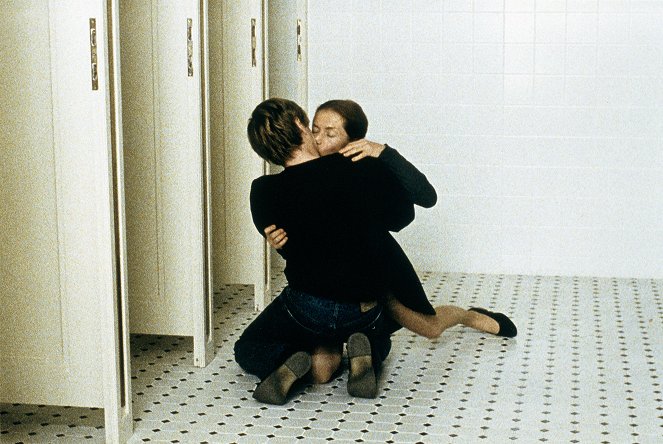
American and British dramas after 2010
The film industry and the distribution system were greatly affected by the proliferation and increase in the number of streaming platforms such as VOD (Video on Demand), online providers of films and series that allow users to watch the audiovisual content of their choice from a wide range of offerings, while TV broadcasting, which has a fixed programme, added a rewatch function and easy recording, which was helped by smart TVs. Blu-Ray discs became worthy competitors to older DVDs and the decade also saw the release of 4K Ultra HD movies, even though sales of physical media declined on average overall due to the increasing popularity of streaming services. At the turn of the decade, starting in 2007, 3D movies came into fashion, but they were mainly big-budget blockbusters and animated films. The popularity of certain films continued to lead to the production of sequels, remakes, reboots and prequels, and film series creating interconnected fictional worlds became a new trend. Dramas became mainstream in the eyes of audiences and they featured at the Oscars and other film awards far more often than any other genre.
The fate of black slaves (2013's 12 Years a Slave, 2019's Harriet), Alzheimer's disease (2014's Still Alice, 2020's The Father), and homosexual romance (2015's Carol, 2017's Call Me by Your Name) became major themes in many dramas. The Help (2011) dealt with racial discrimination, the three Oscar-winning Dallas Buyers Club (2013) described the lives of people with AIDS, the two Oscar-winning Spotlight (2015) told the story of journalists uncovering cases of priests sexually molesting young boys, and Marriage Story (2019) took a procedural look at the breakdown of a marriage. Danny Boyle's six Oscar-nominated 127 Hours (2010) was a survival drama whose protagonist was trapped in a rock abyss, Steven Soderbergh's Magic Mike (2012) was set in a strip club environment, Hidden Figures (2016) featured women employed by NASA, Lenny Abrahamson's Room (2015) told the story of a kidnapped woman forced to raise her son in a single room, and Andrea Arnold's social drama American Honey (2016) visited a community of magazine subscription peddlers. British director Ken Loach succeeded at international festivals with his social dramas I, Daniel Blake (2016) and Sorry We Missed You (2019), which criticized marginal situations in the labour market.
Richard Linklater's Boyhood (2014) was an exceptional event, it was filmed over the span of twelve years with the same actors who naturally aged with their characters. David Fincher's three Oscar-winning drama The Social Network (2010) dealt with the founding of Facebook, Darren Aronofsky's Black Swan (2010) told the story of an ambitious ballerina's mental breakdown, and Ben Affleck's three Oscar-winning Argo (2012) focused on the peculiar rescue mission of dozens of hostages during the Islamic Revolution in Iran. Barry Jenkins’s Moonlight (2016), together with Manchester by the Sea (2016) by Kenneth Lonergan, Once Upon a Time in Hollywood (2019) by Quentin Tarantino, and Chloé Zhao’s Nomadland (2020) were all awarded with several Oscars. Dramas awarded with one Oscar include Blue Jasmine by Woody Allen (2013), Phantom Thread by Paul Thomas Anderson (2017), who also succeeded with his psychological drama The Master (2012), Little Women (2019) by Greta Gerwig, whose Lady Bird (2017) is also worth a mention. Other films that succeeded at the Academy Awards were the sport dramas The Fighter (2010) and Moneyball (2011), and the musical dramas Whiplash (2014) and A Star Is Born (2018). Films that should not be forgotten include Steve McQueen’s Shame (2011) and the American dramas The Tree of Life by Terrence Malick (2011), August: Osage County by John Wells (2013), The Wolf of Wall Street by Martin Scorsese (2013), and The Trial of the Chicago 7 by Aaron Sorkin (2020).
The Father (2020)
Photo © Lionsgate UK

European and non-European dramas after 2010
A number of famous European directors continued to expand their portfolios. Béla Tarr made his last ever film The Turin Horse (2011), Lars von Trier tackled the end of the world in Melancholia (2011) and then caused a stir first with the two-part Nymph()maniac (2013) and then with The House That Jack Built (2018), while Gaspar Noé similarly shocked with the erotic drama Love (2015), and Michael Haneke directed two closely linked dramas, the Oscar-winning Amour (2012) and Happy End (2017). Thomas Vinterberg showed extraordinary form with The Hunt (2012) and the Oscar-winning Another Round (2020), Fatih Akin succeeded with In the Fade (2017), while Andrei Konchalovsky with The Postman's White Nights (2014) and Andrey Zvyagintsev with Elena (2011), Leviathan (2014) and Loveless (2017) were the most successful Russian directors. Leos Carax stirred up the waters with Holy Motors (2012), the Dardenne brothers contributed to their filmography with The Kid with a Bike (2011) and Two Days, One Night (2014), François Ozon added Young & Beautiful (2013), By the Grace of God (2018), and Summer of 85 (2020), and Pedro Almodóvar directed the praised Julieta (2016) and Pain & Glory (2019).
In Romania, the Romanian New Wave directors Cristian Mungiu (Graduation, 2016), Cristi Puiu (Sieranevada, 2016) and Radu Jude (I Do Not Care If We Go Down in History as Barbarians, 2018) carried on with their work. In Greece, a stream of internationally acclaimed films emerged in parallel with the country’s economic crisis; they were absurd and bizarre satirical depictions of a warped human society and earned the moniker "Weird Greek Wave". This wave was started with Attenberg by Athina Rachel Tsangari (2010) and Dogtooth by Yorgos Lanthimos (2009), who would become the most sought-after Greek director with his subsequent films Alps (2011), The Lobster (2015), and The Killing of a Sacred Deer (2017). Filipino director Lav Diaz became famous for his extremely long and slow films From What Is Before (2014) and The Woman Who Left (2016), and Turkish director Nuri Bilge Ceylan gained renown for his dramas Once Upon a Time in Anatolia (2011), Winter Sleep (2014) and The Wild Pear Tree (2018). Among Chinese dramas, it's worth highlighting the heady and dreamy Long Day's Journey Into Dark (2018), which featured an hour-long 3D scene shot in a single take, and the socially serious family saga So Long, My Son (2019), which highlighted the downsides of China's Cultural Revolution and one-child policy. In Japanese drama, the films of director Hirokazu Kore-eda, who portrayed the stories of different families in Like Father, Like Son (2013), Our Little Sister (2015), After the Storm (2016), and Shoplifters (2018), received the most prestige.
The most successful Polish films were the Oscar-winning Ida (2013) and Cold War (2018), by Paweł Pawlikowski, and the drama Corpus Christi (2019), by Jan Komasa. In Italy, two diametrically opposed filmmakers met with the greatest acclaim: Paolo Sorrentino, whose Oscar-winning The Great Beauty (2013) and Youth (2015) dealt with the lives of the elite, and Alice Rohrwacher, whose social dramas The Wonders (2014) and Happy as Lazzaro (2018) focused on people from the lower social class. Sweden discovered Ruben Östlund and his award-winning films Play (2011), Turist (2014), and The Square (2017), while in France, Canadian Xavier Dolan and his dramas Love, Imagined (2010), Laurence Anyways (2012), Mommy (2014), It's Only the End of the World (2016), and Matthias & Maxime (2019) were a revelation. In addition, the French films Blue Is the Warmest Colour (2013), 120 BPM (Beats Per Minute) (2017), and Portrait of a Lady on Fire (2019) also made a significant impact.
In Iran, Asghar Farhadi (2011's A Separation and 2016's The Salesman, both Oscar winners) and Jafar Panahi (2015's Taxi Tehran, 2018's 3 Faces) became the country’s top filmmakers. Among Mexican filmmakers, the most successful were Alfonso Cuarón (2018 Oscar-winning Roma) and Carlos Reygadas (2012's Post Tenebras Lux and 2018's Our Time). Among German films, the comedy drama Toni Erdmann (2016) and the films Stations of the Cross (2014), Never Look Away (2018) and System Crasher (2019) are particularly noteworthy, while the Hungarian films include the Oscar-winning Holocaust drama Son of Saul (2015) and the romantic drama On Body and Soul (2017). Other films that should not be forgotten include the Georgian Corn Island (2014), the Bulgarian Glory (2016), the Norwegian Thelma (2017), the South Korean Burning (2018), the Chilean Oscar-winning A Fantastic Woman (2017), the Canadian Genesis (2018), the Icelandic A White, White Day (2019), the Czech The Painted Bird (2019), the Danish-Swedish Queen of Hearts (2019) and the Norwegian-Swedish Hope (2019).
Filmmaniak
Best dramas
The Shawshank Redemption (1994) |
Forrest Gump (1994) |
The Green Mile (1999) |
Se7en (1995) |
One Flew over the Cuckoo's Nest (1975) |
Schindler's List (1993) |
The Godfather (1972) |
12 Angry Men (1957) |
The Intouchables (2011) |
Pulp Fiction (1994) |
| All the best dramas |

